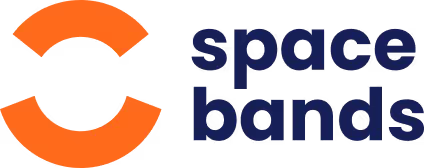What problem are we really solving with better safety data?
Britain lost an estimated 33.7 million working days in 2023 to 2024 because of work-related ill health and non-fatal injuries. The cost to society hit £21.6 billion in 2022 to 2023. Almost 1.7 million people were living with a work-related illness, with 776,000 reporting stress, depression or anxiety, and 543,000 reporting musculoskeletal disorders. This is not fringe. It is the day-to-day drag on productivity that every operations leader feels.
Why does “proactive” health & safety matter in 2026?
Because the trend line is crystal clear. Stress remains the single biggest driver of work-related ill health, and it has stayed above pre-pandemic levels. At the same time, employers are being asked to do more with less, while sickness and presenteeism drain output. The IPPR estimated the wider cost of workplace sickness at £103 billion a year when you include lost productivity from people working while ill. In short, waiting to react is expensive. Acting early is cheaper. The Guardian
Does investing in safety actually pay back?
Multiple analyses say yes. Studies often cite a return of four to six times for every unit invested in safety. Comcare reported an average return of 5.81 to 1 for workplace health programs, alongside reductions in sick leave, workers’ compensation and disability management costs. Your mileage will vary, but the direction is consistent. redrisks.com
What kinds of safety data moves the needle?
Think in three layers.
- Exposure data
Vibration, noise and similar exposures are classic lag-hiding risks. HSE data shows around 12,000 workers each year with work-related hearing problems and 100 new occupational deafness cases in 2023. BSIF flagged hundreds of new HAVS and CTS cases recorded in 2023. Continuous measurement turns “we think” into “we know,” so you can intervene before thresholds are breached. HSE - Operational data
Tasks, tools, locations, shifts, overtime and subcontractor activity. When married to exposure and incident data, operations data reveals patterns you can act on. That is how you find the noisy process at 2 a.m., the tool that spikes vibration points, or the shift with higher first-hour incidents. - People and wellbeing data
Stress, fatigue and musculoskeletal risk keep showing up in the national numbers. If you do not measure and manage them, you will pay for them anyway. The national conversation is shifting toward employer responsibility, with proposals for wider occupational health access and employer spending of £5 to £15 per employee per month. The Guardian
Which health & safety metrics should I prioritise for decision-makers?
- Exposure minutes and points against legal or internal thresholds
- A(8) vibration and daily noise dose, tied to specific tasks and tools
- Near misses per hours worked, segmented by location and activity
- Time to control from first alert to verified mitigation
- Working days lost avoided and claims avoided calculated from trend changes
- £ per intervention and £ saved per root cause removed
These are classic leading indicators in modern safety analytics and they support both weekly action and board-level ROI. PMC
What technologies will change the game in 2026?
- Always-on wearable sensing and analytics
Multi-sensor wearables like spacebands now capture vibration, noise and proximity in real time, then sync to dashboards that surface patterns and recommend actions. Done well, this allows targeted tool changes, shift redesign and smarter maintenance rather than blanket bans. - Predictive safety analytics
The combination of leading indicators, machine data and exposure history helps forecast risk hot spots. The practical win is simple. You schedule controls before the incident, not after. Safety Space - Immersive training with XR
VR and mixed reality are maturing from novelty to evidence-led tools. IOSH has been exploring XR’s role in improved retention and decision-making under pressure. Providers like IkigaiXR offer IOSH-approved immersive learning that blends e-learning with XR scenarios. When analytics reveal a recurring risk, you can prescribe a targeted XR module and then retest competence. IOSH
Where do HAVS and NIHL fit into a modern data strategy?
They are the perfect proof points. HSE tracks long-running vibration conditions and noise-related hearing problems for good reason. They develop quietly, then become costly, permanent and life-limiting. By combining triaxial vibration data, tool usage time and job context, you can predict when a worker is likely to exceed internal or regulatory limits and divert work before it happens. The business case lands when you show days lost avoided, claim risk reduced and tooling cost optimised. HSE
Is there a simple way to show the ROI to finance?
Yes. Tie your intervention log to pounds and days.
- Start with the HSE baseline of £21.6 billion cost and 33.7 million days lost.
- Attribute your incidents and days lost by cause.
- For each control, record cost and the change in trend.
- Translate days saved into payroll and throughput value, and translate incident reduction into predicted claim and premium avoidance.
Even a modest improvement in stress-related absence pays back. Remember the national estimate that presenteeism and sickness together cost the economy tens of billions each year. HSE
To assess whether spacebands is a viable option for you, we created an ROI Calculator to see how much you could save by implementing spacebands.
What stops organisations from getting value out of safety data?
- Fragmented systems that keep exposure, training and incidents in separate silos
- Sampling without context so you cannot link a high reading to a task you can change
- Lagging-only culture that measures last quarter’s injuries without tracking the daily precursors
- Training that does not stick, because it is generic rather than targeted to the hot spots your data reveals
The fix is not flashy. It is integration, context and feedback loops.
How should a proactive team get started in Q1 2026?
- Baseline with intent
Measure exposure, incidents and attendance for eight weeks. Tag each data point to task, tool, shift and location. spacebands offer a free online HAVS Calculator to measure havs exposure online with exportable pdfs. - Pick two killers of productivity
Most sites will choose stress-related absence and one physical exposure. Make them your OKRs. - Close the loop
When the dashboard flags risk, intervene within the shift, then log the action and its cost. Feed that back into your weekly stand-up and monthly board pack. - Build capability
Use immersive training to address the top two recurring risks. If you partner with IkigaiXR, align modules to the same indicators you track, so learning and analytics point in the same direction. LinkedIn UK
What should executives watch to know it is working?
- Lead indicators improve before lag indicators
- Average time to control drops month on month
- Days lost per 100 employees trends down and stays down
- Cost per prevented case falls as you standardise fixes
- Audit and enforcement exposure reduces as evidence quality improves
What is the headline takeaway?
Proactive teams win because they move from sporadic sampling to continuous, contextualised data, then turn that insight into timely action and targeted training. The national numbers are not moving fast enough on their own. In 2026, the advantage belongs to those who measure daily, predict weekly and report monthly in the language of operations and finance. That is how health and safety becomes a growth lever rather than a cost centre.




